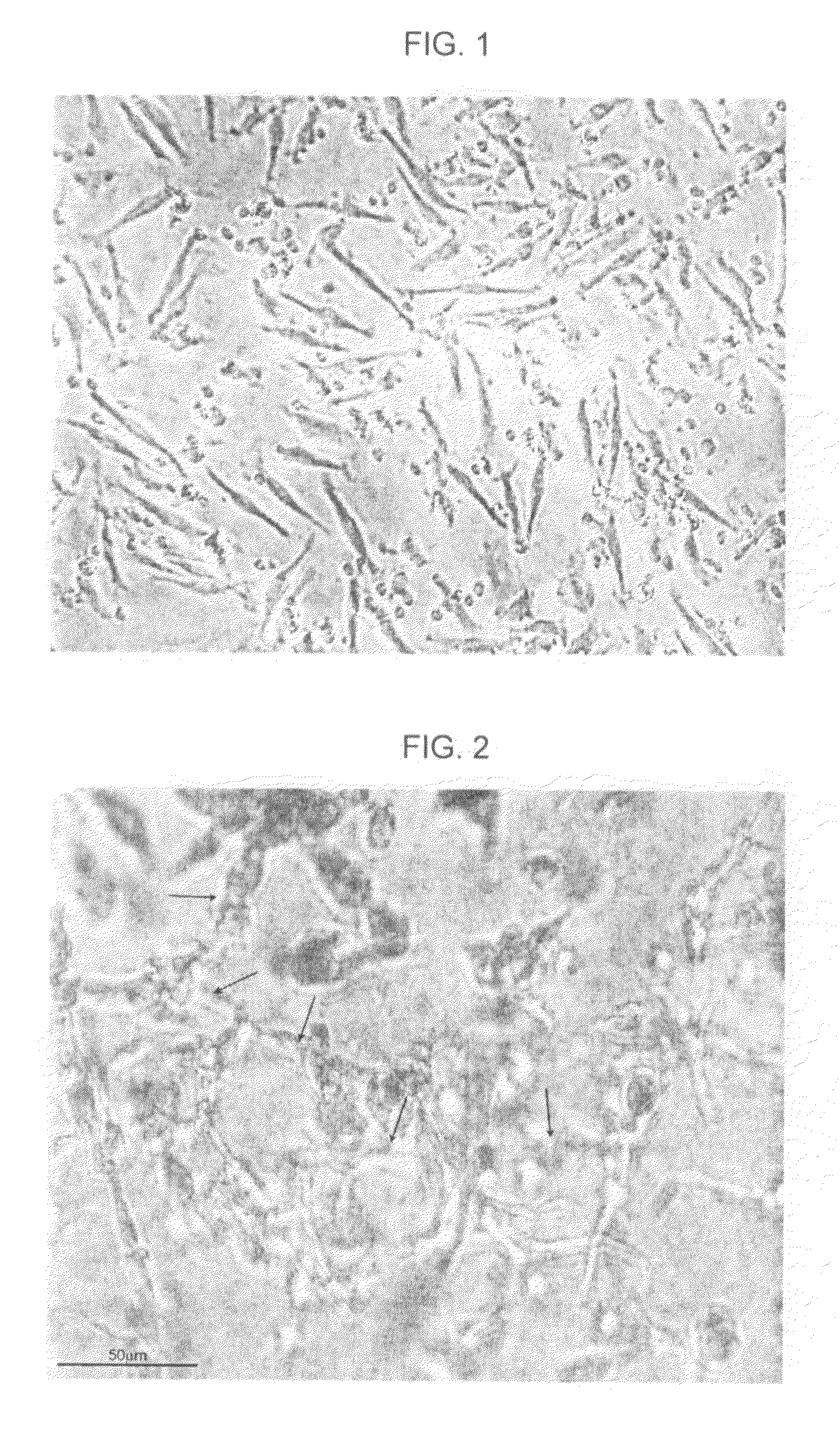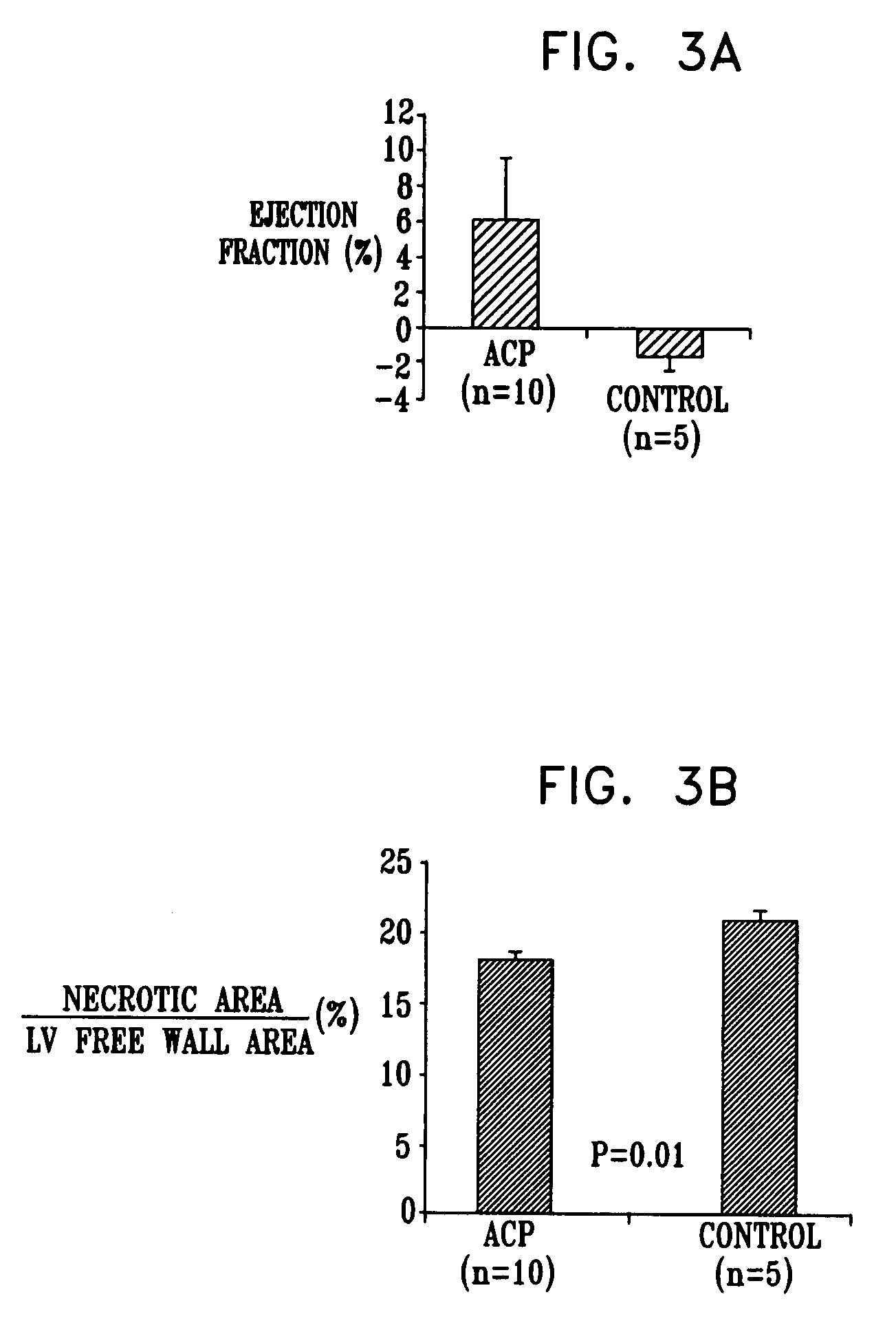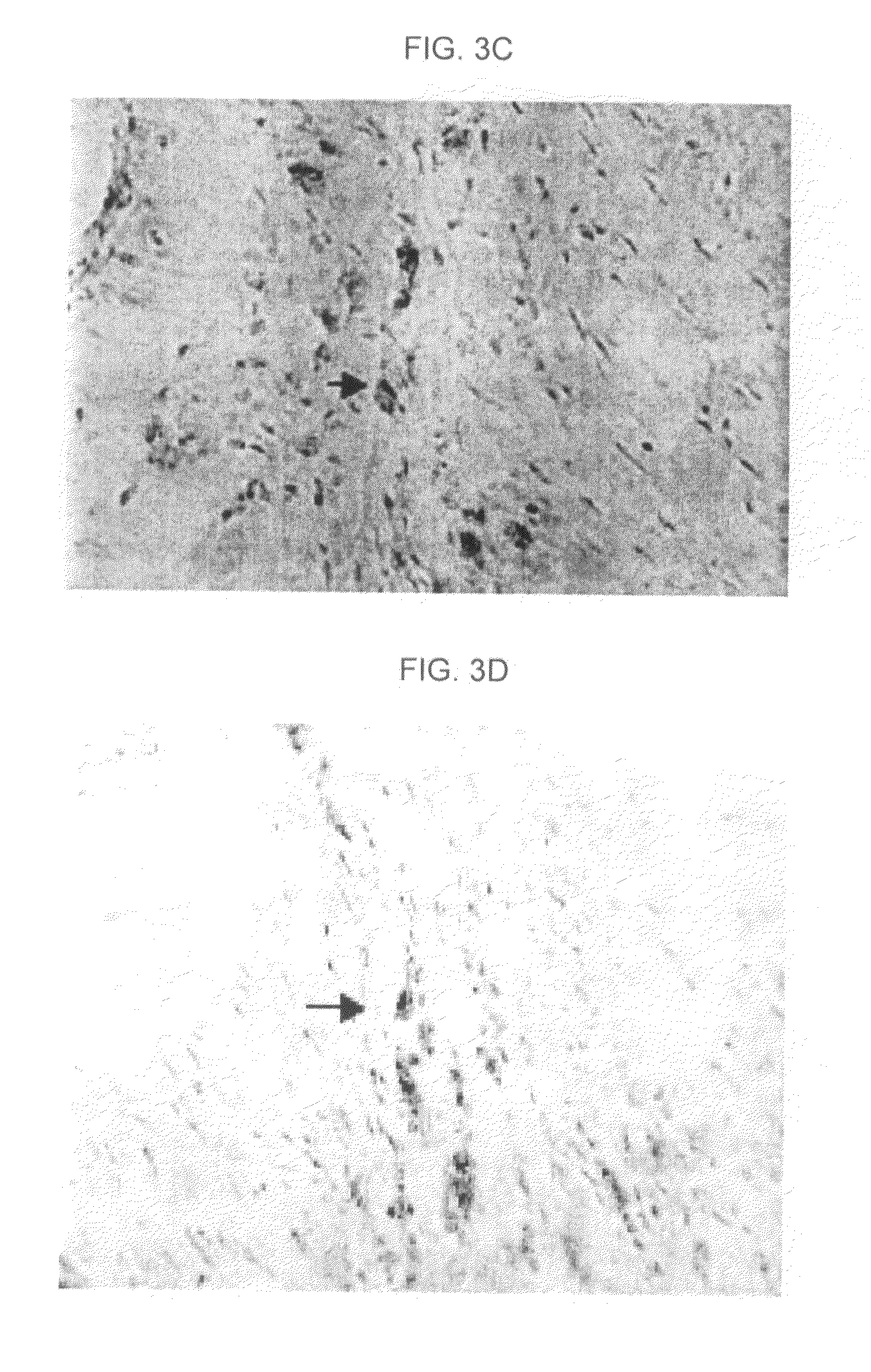Regulating stem cells
a stem cell and stem cell technology, applied in the field of stem cells, can solve the problem of not being able to produce cultures of specific cell types in an efficient way
- Summary
- Abstract
- Description
- Claims
- Application Information
AI Technical Summary
Benefits of technology
Problems solved by technology
Method used
Image
Examples
example 4
[0317]In the same set of experiments, a human-PBMC-derived CCP was cultured in order to generate an ACP-rich PCP as described in Example 3. Flow-cytometry percentage staining results from ten independent experiments are summarized in Table 3. (Results for CD133, Tie-2, and CD117 were only measured in n=7, 6, and 6, of the experiments.) Table 3 shows the average staining results obtained on day 5 of culturing. Results using such a protocol typically yield a PCP having at least 20% ACPs, typically at least 45% ACPs.
[0318]
TABLE 3NumberAverageexperimentsonStandard(n)day 5Error% Viability1093.840.63% CD451094.291.46% CD141070.693.56% CD341023.094.98% CD34 + CD45− / dim104.191.34CD34 + CD14− / dim103.420.73% KDR108.904.49% CD13370.280.18% Tie-2624.8411.46% CD117610.824.60% ACPs in product1049.4311.44
example 5
[0319]In a separate set of experiments, a human-PBMC-derived CCP was cultured in order to generate an ACP-rich PCP as described in Example 3. Secretion levels (pg / ml) of IL-8, VEGF, and angiogenin from four independent experiments are summarized in Table 4. Table 4 shows the average secretion levels obtained from harvested ACP-rich PCP cells that were washed from culture medium and incubated for 24 hours in a serum-free medium.
[0320]
TABLE 4GroupIL-8 pg / mlVEGF pg / mlAngiogenin pg / mlControl Medium≦20≦20≦20ACP derived10107165615medium
example 6
[0321]In the same set of experiments, a human-PBMC-derived CCP was cultured in order to generate an ACP-rich PCP as described in Example 3. Angiogenic pattern and vascular tube formation of ACP-rich PCP cells was examined microscopically following plating of the cells on an extracellular matrix gel (ECM). Typically, semi-closed and closed polygons of capillaries and complex mesh-like capillary structures were observed and scored (according to a scale published by Kayisli et al. (52) as grade 4-5.
[0322]FIG. 2 is a photograph showing tube formation in an ACPs, produced in the experiments of Example 6, in accordance with an embodiment of the present invention. The figure shows typical mesh-like capillary structures generated from a harvested ACPs, suitable for administration to a human.
PUM
| Property | Measurement | Unit |
|---|---|---|
| density | aaaaa | aaaaa |
| density | aaaaa | aaaaa |
| density | aaaaa | aaaaa |
Abstract
Description
Claims
Application Information
 Login to View More
Login to View More - R&D
- Intellectual Property
- Life Sciences
- Materials
- Tech Scout
- Unparalleled Data Quality
- Higher Quality Content
- 60% Fewer Hallucinations
Browse by: Latest US Patents, China's latest patents, Technical Efficacy Thesaurus, Application Domain, Technology Topic, Popular Technical Reports.
© 2025 PatSnap. All rights reserved.Legal|Privacy policy|Modern Slavery Act Transparency Statement|Sitemap|About US| Contact US: help@patsnap.com



